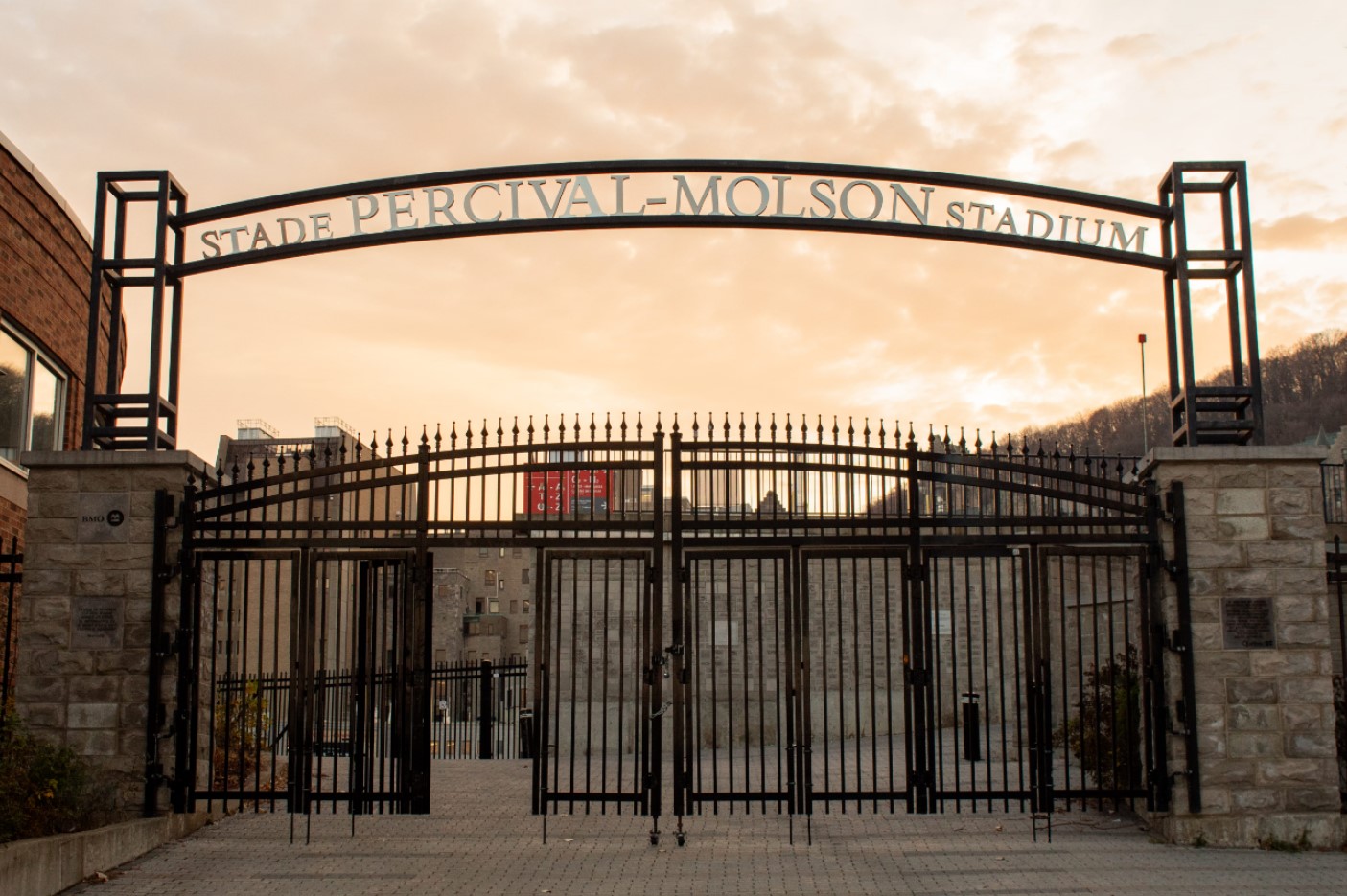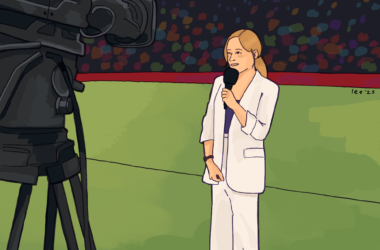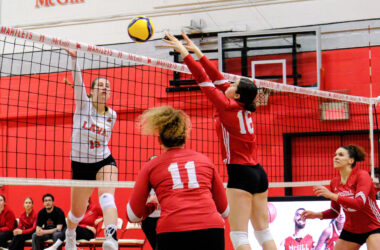McGill Athletics and Recreation boasts stellar facilities, including the Memorial Pool, an indoor and outdoor track, outdoor tennis courts, and squash courts. The university’s Molson Stadium is also home to the CFL’s Montreal Alouettes. McGill has 29 men’s and women’s varsity teams across 17 sports, over 25 intramural teams, and 14 sport clubs. These athletic offerings are some of the best in Canada, so one might expect these activities to attract attention from the 40,000 undergraduate and postgraduate students who attend McGill.
Despite the sheer number of McGill Students, most of the attention that McGill Athletics and Recreation has received from students over the past few years has been connected to the Change the Name campaign, which has inadvertently cemented many students’ negative views of McGill Athletics.
Attendance numbers at sports events reflect this attitude. Love Competition Hall, where McGill’s basketball and volleyball teams play, has a capacity of 950 people, but the average attendance for men’s basketball games only broke 300 attendees three times in the past seven years. The highest attendance at a McGill Men’s Varsity game in the 23,420-seat Molson Stadium in almost 60 years was 6,218 during a 2008 “Fill the Stadium” match against Bishop’s University. In a Facebook survey of 49 McGill students and recent graduates, over one third reported never having attended a varsity, intramural, or club event.
The reasons students gave for not attending were mixed: Aside from students who simply are not interested in sports, obstacles included not knowing when events were happening, living too far from campus, being too busy with schoolwork, seeing the environment as “super unwelcoming,” and experiencing “no hype.” One student reported attending a varsity basketball game in their first year after winning free tickets, but said that they were unwilling to pay the five-dollar student entrance fee themselves to attend more games.
When students do attend games, their experiences are anything but uniform.
“Those in my social circle have only positive things to say about McGill Athletics,” Hailey Evelyn, U3 Nursing, wrote in an email to The McGill Tribune. “I enjoyed the atmosphere of each game and it was nice to feel part of such a large crowd.”
One student in McGill Fight Band said they had fun, but wished the crowds were bigger and more enthusiastic.
“The atmosphere of games can often feel a bit dispassionate [….] [Fight Band] often [comprises] a majority of the ‘spirit’ in [smaller] audiences,” India Ainsley, U4 Arts and Fight Band member, said.
Unlike other schools, athletics are seldom perceived as part of the McGill experience. While Canadian universities do not have an equivalent of the sprawling American NCAA games, Queen’s University’s Homecoming is known for its attendance, garnering between 7,000 and 9,000 fans each year since 2013. A 2019 game between McGill and Laval University in Quebec City drew 14,169 attendees.
“[Athletics] are not necessarily part of McGill’s history,” Sarah Canzer, McGill Athletics Social Media, Community and Fan Engagement Administrator, told the Tribune. “It’s not a huge part of our culture historically.”
Although attending games is not McGill students’ forte, the school itself has produced 121 Olympic athletes, countless professional athletes in several leagues, and the creators of modern forms of basketball and ice hockey. Despite beliefs that McGill teams often lose, the men’s ice hockey team won championships every year from 2008 to 2012, and the women’s team were very successful from 2006 to 2010. The men’s baseball team won a record-breaking four championships in a row between 2014 and 2017. Clearly, McGill students are not lacking in athletic talent, but students still seem apathetic about watching their teams play.
The problem of attendance is not a recent phenomenon. The Tribune has published several articles dating back decades remarking on the lack of attendance. McGill Athletics and Recreation faces obstacles that students fail to consider and, as a result, efforts to increase attendance have varied. With so many campus events, clubs, and activities, opportunities to attend sports events often slip off students’ radar because the range of choices feel overwhelming.
“With our limited resources, we can’t promote every single game,” Canzer said. “So we choose every week the game that we’re going to highlight and push, and then it’s up to the students, the athletes, other than that.”
According to Canzer, the most successful promotions are the ones done with the support of students. The International Student Network, with the help of McGill Athletics, often organizes an event in which international students attend a free pizza party hosted by the women’s hockey team, learn the rules of the sport, then watch a game. Several years ago, the men’s soccer team attended an intramural soccer game, cheered on the teams, and handed out free tickets to their next game. Collaborative events allow students to take an active role in the McGill Athletics community, helping them connect with the athletes they are rooting for.
When events do not involve students, however, they are less successful.
“[McGill Athletics] really seems to like the idea of bringing outside activity coordinators or DJs to fill up time between periods of play,” Ainsley said. “It might behoove them to try and get more activities or events offered by student groups in order to reach out to the general student population.”
From attending a tailgate in a small town, to massive university homecoming games, to cheering on the Habs from the nosebleed seats with a group of friends, the social aspect of sports is one of its biggest draws. For McGill students who do not personally know any athletes, this incentive to support their peers is missing, limiting attendees to friends, family, and hardcore sports fans.
“People typically go to sports games as more of a social thing, or to cheer on their athlete friends as opposed to going to see McGill win,” Annina DeLuca, U2 Management, said.
Most of the initiative in collaborative athletic events is taken by students, whether they are promoting events themselves or organizing events like the International Student Society. To increase attendance at regular events, McGill Athletics should reach out to student organizations for help with promotion or entertainment.
Poor attendance at games is a self-perpetuating cycle: Students do not enjoy games with no crowd energy, so stands remain empty. McGill students who are unaffiliated with the athletics department could benefit from taking a risk by leaving their comfort zones and becoming engaged. A crucial part of the McGill experience is independence and exploration; attending sports games or joining an intramural or club team should be a part of this just as much as exploring the Plateau or taking a night off from studying to go to Blues Pub.
“It is refreshing to come to sporting events and see a bunch of McGill students from different years and programs,” Evelyn said. “It reminds me that I belong to a larger community and I enjoy being part of the crowd cheering for the same team.”
Despite what the mere attendance statistics say, McGill students want to support each other—and McGill Athletics could help them to do that.








